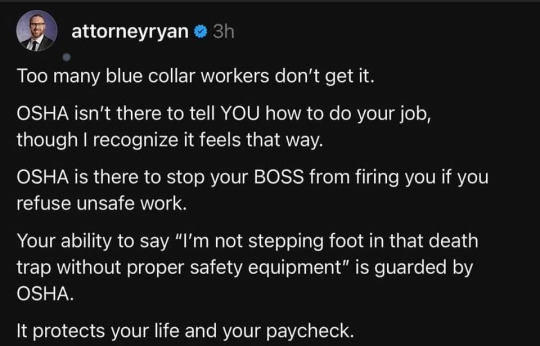You would be surprised how often it will be needed. Go hard on crafts every day.
Last active 3 hours ago
Don't wanna be here? Send us removal request.
Text
Should I do more long form tutorials
I've been told in the past that I'm pretty good at explaining things when it comes to sewing, quilting, textile arts in general. Not just the how to do the thing, but also the why do we do things a certain way.
Is that something y'all would like me to write about.
9 notes
·
View notes
Photo
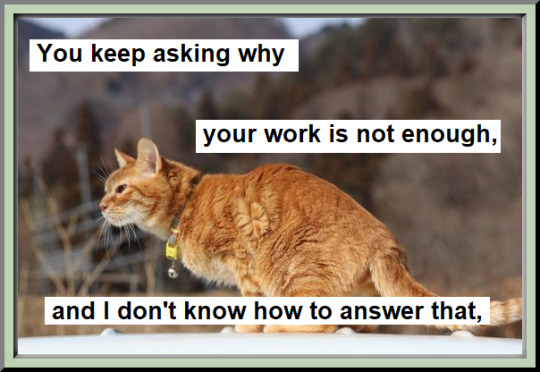
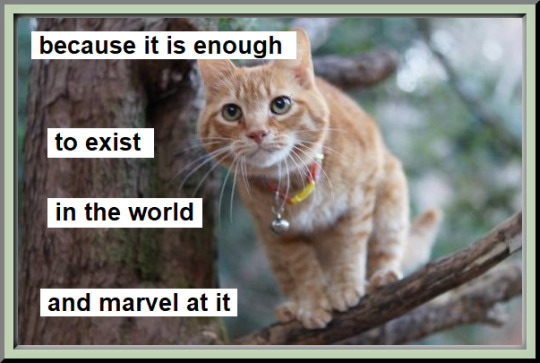

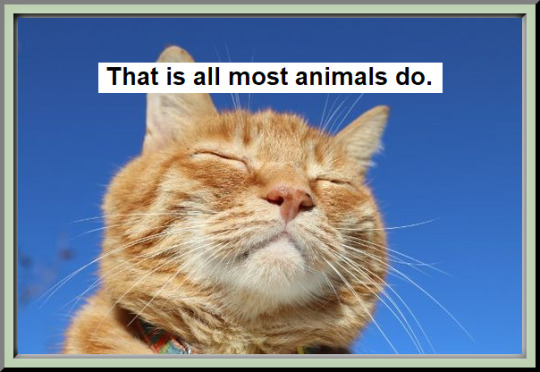
- A Psalm for the Wild-Built, Becky Chambers // kagonekoshiro
144K notes
·
View notes
Text
Y'all are sleeping (pun intended) on another bear themed bracket!
March Napness - who can hibernate the longest.
0 notes
Text
It goes deeper, rather literally.
I used to be a field archaeologist and you can tell when you're digging a shovel tests (a tiny archaeological unit the size of a shovel blade which you do on large grid as an initial survey) in areas that have or have not had European agriculture on them. In some places you have thick silty loam and have to dig down deep before you hit the clay subsoils. On the ridges of central Kentucky you can dig a shovel test with the side of your boot.
The settlers came in and they murdered the soil. They plowed it and planted into it with corn and hemp, and then they grew tobacco (which absolutely sucks the nutrients out of soil). When the land couldn't support crops any longer they put dairy cattle on the land. When the land couldn't support dairy, they switched to beef herds. When the ridgetops couldn't even keep a beef cow alive they let it grow back. When you drive North from Lexington towards Maysville you'll see the thin scraggly forests which are hanging on those ridgetops, born of the neglect that came when the soil was entirely depleted - but also slowly over time bringing back the soil in another way.
by the way (i sadly cant share this document cause it was sent to me personally and i dont think its online) i've been reading a compilation of earliest writings by European settlers about Kentucky and its fucking wild
the main thing they mention is the river cane, everywhere. Cane cane cane cane cane on every page. Canebrakes stretching for miles and miles, dark woodlands of massive trees spaced wide apart with canebrake as the understory
But also they talk a lot about: Huge fields of strawberries that seem to turn red in spring with all the strawberries getting ripe. Raspberries. Groves of American plums, even some AN ACRE big just a huge patch of plum trees. Cherry trees. Huge grape vines growing up one in every four trees. Persimmons and pawpaws. Walnut trees. Hickory trees. Oak trees. And sugar maples. EVERYWHERE. And the canebrakes absolutely TEEMING with turkeys, passenger pigeons and quails
Reading the descriptions of looking out into a valley and seeing herds of 200-300 bison frolicking in the clover and river cane almost makes me want to cry...
It's crazy how much they talk about plum trees because plum trees are so rare now!
Really it's wild seeing how abundant the edible woody plant species and berries just-so-happened to be when Europeans first came. Right?
To me it seems like obvious pieces of evidence that indigenous people were actively cultivating this land. It was a landscape scale agriculture fully integrated with the ecosystem.
Even more so because it started to collapse very soon after settlers came. The sugar maple trees were mostly killed by settlers hacking indiscriminately into them with hatchets for maple syrup making without caring about the trees survival, the livestock running loose destroyed the native clover and cane causing invasive grass to grow back, and the bison...reading about the bison is so sad!
The wasteful slaughter of bison began very early. Lots of writers talk about other settlers killing bison just to say they killed one, or killing several of them and barely taking one horse load of meat from them, or seeing traders killing bison by the hundreds just to take the most valuable parts and leave the body to rot...And the writers knew it was wrong! but they couldn't stop the others from doing it. So bison were basically gone from around Lexington before 1800 :(
Settlers even killed the bison for wool--this was fascinating to me, they described making their cloth out of nettle bast fiber and bison wool. Native Americans also used bison wool for textiles, but as far as I know they didn't kill them for it (tho i reckon they might have used the wool on a bison they killed)...the wool peels right off in big clumps in the spring. Same thing with mountain goats, indigenous peoples would just gather the mountain goat wool when it naturally shed. But the settlers were killing bison to shave the wool off and it said only the young ones had good wool so if they killed a bison that didn't have good wool on it they would just kill another one.
They destroyed the river cane not knowing that bamboo was strong and useful for practically everything. Destroyed the native pastures of buffalo clover, Kentucky clover, running buffalo clover and God knows what other extinct or undiscovered clovers. And now wild strawberries and raspberries are hard to find, American plums very rare, persimmons rare...
The settlers didn't understand this land, didn't try to understand it, they were full of greed and just tried to force their idea of agriculture and their idea of society onto it, and watched in bafflement as the natural abundance and beauty of the land around them fell into decay and ruin from their abuse.
2K notes
·
View notes
Text
As a former librarian I'm actually required to remind you that many libraries that subscribe to Libby are opted into a program that lets you subscribe and access magazines for free with no wait

And that this is actually a really fun, low cost way to not only access news and larger cultural magazines, but also to get free patterns for many different crafts that you can screenshot if need be and that lower the financial barriers to entry for trying new things


From my experience working in both academic and public libraries, many libraries are use it or lose it funding-- I have to say this because a lot of patrons feel guilty for how much they use the library and how often they're using it funny enough, but the worst thing you can do for libraries is not try out new features and not use what's already given to you as much as possible.
The numbers that come as a result of your patronage are how most libraries justify their continued existence in times of financial hardship, which sucks but, go check out some magazines on Libby!
15K notes
·
View notes
Text
Its not that she did his laundry - its that he wrote a book about independence and self sufficiency while being supported on the back of the women around him.
I hate the “Thoreau’s mom did his laundry” criticism so much, it drives me crazy.
Henry Thoreau did not go to Walden Pond because he thought it would be a fun adventure. He went into the woods because he was deeply depressed and burnt out. He was running from the horror of his brother and best friend recently dying in his arms, and the haunting memory of causing the Fairhaven Bay fire. His friend Ellery Channing literally gave him the ultimatum of either taking some time off to write and think, or else be institutionalized.
I think Thoreau’s mother saw her depressed son choosing to retreat into a small cabin in the woods, and was worried about him. Of course she did his laundry - just as Ralph Waldo Emerson probably brought him firewood and bread. These were not chores of obligation to support a “great” man, but services of love to help their deeply depressed 28yo son and friend.
And if you ask me, there’s a lesson in that - to “suck out the marrow of life” and “live deliberately,” one must also accept help offered from the people in your life who love you. There is no true transcendentalism or individualism without love and friendship behind it.
33K notes
·
View notes
Text
I've never seen anemic people have issue with people calling scant and unsatisfactory things "anemic" as a description of its state. Like I guess the low-iron people are there like "yeah mood, I am also low-energy, watered-down, lacking in substance, and not truly living up to the potential that I could have had if provided with the right tools and resources. Just like this newest Warhammer release."
9K notes
·
View notes
Text
I love the bears!
I'm trying so hard and get my shit together and finish these (months old 🫣) commissions. Some of these bears I'd already oiled up, but added another coat since I had to oil some newer bears.

The basswood bears are gonna end up painted. But I'm most proud of this bear.



I've tried before to make polar bears, but their faces are so much different than your typical fatass brown bear. I think I pulled it off for the most part.
Hopefully the oil will hurry up and dry in a couple of days so I can get to painting them, already. These, along with some other bears that aren't pictured, are intended as freebies to go along with the actual commissions.
422 notes
·
View notes
Text

A beginning! The bear has been hanging clipped to my picture thingy for a while now and last week I got in some fabrics to use for the background. I started with the grass and I'm very happy with what I have here. Its very improvisational and I'll eventually make it into one large section but maybe not until the sky starts coming together.
I want to try one block wonder style hexagons for the sky.
46 notes
·
View notes
Text
a rouge pipe cleaner.... escaped from the craft supplies
25K notes
·
View notes
Text


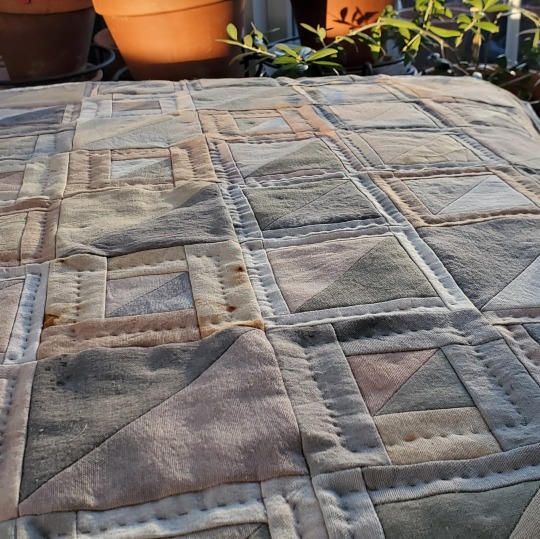


Distance
Dyed with avocado skins and pits, black walnuts, acorns, goldenrod, and rust, machine pieced and hand quilted. 39 inches square
150 notes
·
View notes
Text
Not really adding anything to the conversation, but almost every part of the Kudzu plant is edible (not the seed pods or seeds) and I had the nicest jelly made out of Kuszu flowers many years ago.
dont @ me about dandelions not being native to north america either cause like man, you are NOT going to like how i feel about kudzu these days
but yea after studying it a lot and observing plants in their environments, ive become less and less enthusiastic about "invasive plants hate die kill auughauhghgua" messages, because with most invasive plants the problem is like 10% the plant itself and 90% landscape level problems with how we manage land
treating natural spaces as "leftover" scraps surrounding built things and abandoning/not interacting with them except for occasional violent episodes of "management" with chainsaws and roundup
3K notes
·
View notes
Text

I also made myself a new sweatshirt
5 notes
·
View notes


